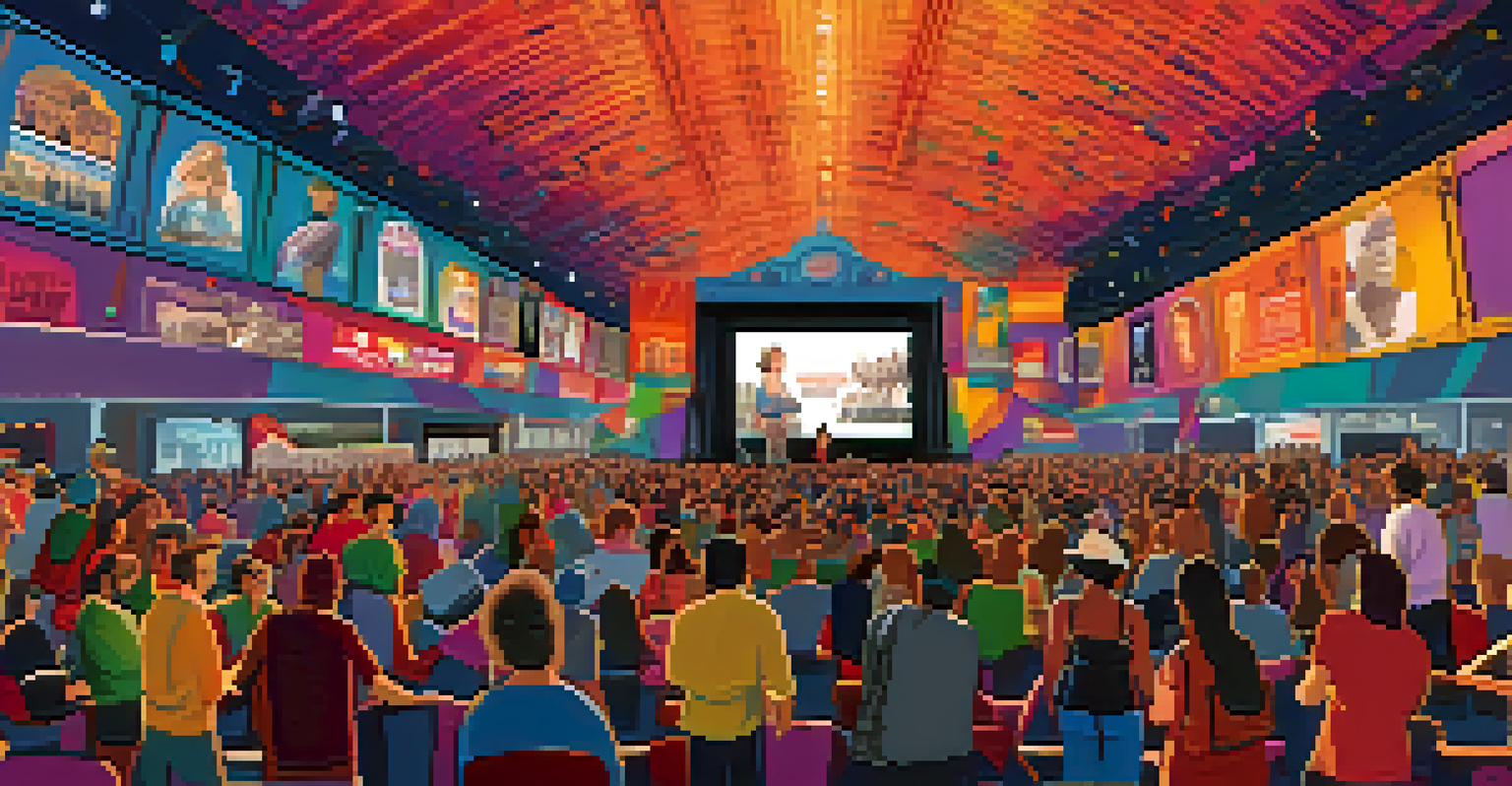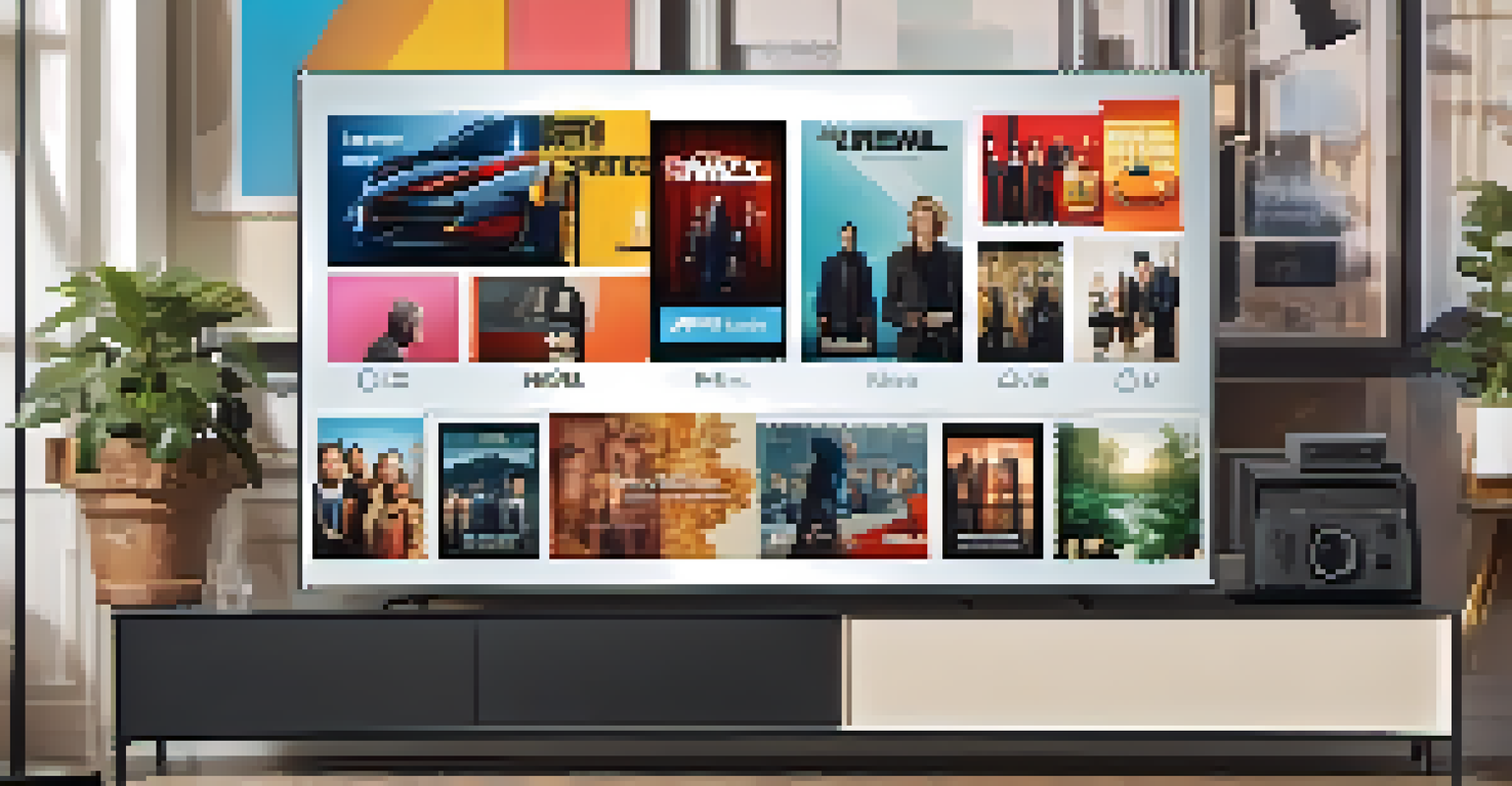The Rise of Streaming: Changing Filmmaking Distribution

Understanding the Streaming Phenomenon in Filmmaking
Streaming platforms have revolutionized how films are consumed, moving from traditional theaters to digital screens. It's akin to how books transitioned from paper to e-readers, making stories more accessible. Today, viewers can enjoy films anytime, anywhere, simply by clicking a button.
The great thing about streaming is that it allows filmmakers to reach audiences who might not have access to their work otherwise.
As more people gravitate toward streaming, filmmakers are recognizing the potential to reach wider audiences. This shift allows them to experiment with diverse genres and narratives that might not find a place in mainstream cinemas. It’s an exciting time for creativity in storytelling.
Moreover, the pandemic accelerated this trend, pushing many film releases directly to streaming platforms. This new normal has encouraged filmmakers to rethink their distribution strategies, leading to an ever-evolving landscape in the film industry.
The Role of Major Streaming Services in Film Distribution
Major streaming services like Netflix, Amazon Prime, and Disney+ have become pivotal players in the film distribution game. They not only showcase films but also invest in original content, providing filmmakers with funding and creative freedom. This partnership often results in unique stories that resonate with diverse audiences.

These platforms have the resources to market films effectively, utilizing data analytics to understand viewer preferences. It’s like having a powerful magnifying glass to spotlight the kinds of films people want to see. This targeted approach contrasts sharply with traditional distribution methods that relied heavily on broad advertising.
Streaming Revolutionizes Film Access
Streaming platforms have made films more accessible, allowing viewers to enjoy them anytime and anywhere.
Additionally, the rise of these services has prompted film festivals to adapt, with many now offering virtual screenings. This accessibility means that independent filmmakers can showcase their work to a global audience, leveling the playing field in film distribution.
Impact on Independent Filmmakers and New Talent
Streaming platforms have opened doors for independent filmmakers who might struggle to get their films into theaters. With lower barriers to entry, these creators can share their unique voices and stories, often filled with cultural and personal nuances. It's a bit like the indie music scene, where artists find their niche audience outside of mainstream channels.
Streaming platforms have democratized filmmaking, giving independent creators a voice and a chance to showcase their art on a global stage.
Moreover, the demand for diverse content has led streaming services to actively seek out fresh talent. This focus fosters an environment where new filmmakers can thrive, leading to a rich tapestry of films that reflect varied perspectives. It’s a win-win situation for both the platforms and the audiences.
However, with this abundance of content comes the challenge of standing out. Filmmakers must find innovative ways to engage viewers and create buzz around their projects. This competitive landscape can be daunting but also invigorating for those willing to take risks.
Changing Audience Behavior in Film Consumption
Streaming has transformed how audiences approach film consumption, shifting from scheduled viewing to on-demand experiences. Viewers now have the luxury to binge-watch entire seasons or catch up on films during their free time, making it more convenient than ever. This change mirrors how we consume music or television, prioritizing flexibility.
As a result, audiences are becoming more discerning with their choices, often seeking recommendations from friends or online platforms. This trend emphasizes the importance of word-of-mouth marketing and social media presence for filmmakers. A film that can generate buzz online stands a better chance of success in this digital age.
New Opportunities for Independent Filmmakers
The rise of streaming has created pathways for independent filmmakers to share their unique stories with a global audience.
Furthermore, the viewing experience at home has evolved, with many investing in high-quality sound systems and screens. This shift has led to discussions about the cinematic experience and whether it can be replicated outside a theater. Filmmakers are now challenged to create engaging content that captivates viewers in both settings.
Challenges and Controversies Surrounding Streaming Releases
Despite its advantages, the rise of streaming also brings challenges, particularly regarding revenue distribution. Filmmakers often find themselves navigating complex contracts that may not guarantee fair compensation. This situation can feel like a tightrope walk, balancing visibility and financial sustainability.
Additionally, there are ongoing debates about the quality of content being produced for streaming. Some critics argue that the rush to produce content can lead to a decline in quality, prioritizing quantity over substance. Filmmakers are thus under pressure to deliver compelling narratives while meeting the insatiable demand for new material.
Moreover, the exclusivity of some streaming platforms can limit a film's reach, especially for independent projects. This limitation raises questions about accessibility and whether all voices can be heard in a crowded digital marketplace. It's a conversation worth having as the industry continues to evolve.
The Future of Film Distribution in a Streaming World
As streaming continues to dominate the film industry, it's essential to consider its future trajectory. Will traditional theaters adapt, or will they become relics of the past? This scenario mirrors the evolution of bookstores in the age of e-commerce, where adaptation is key to survival.
Filmmakers are likely to explore hybrid release models, combining theatrical and streaming debuts. This approach could provide audiences with the best of both worlds, allowing for communal experiences while still catering to individual preferences. The future may very well be about choice and flexibility.
Evolving Audience Consumption Habits
Audiences now prefer on-demand viewing, leading to a shift in how films are marketed and consumed.
Ultimately, collaboration between filmmakers, streaming platforms, and audiences will shape the next chapter in film distribution. As the landscape changes, it's an exciting time to be part of the film industry, filled with endless possibilities for creativity and connection.
Conclusion: Embracing the Streaming Revolution
The rise of streaming has undeniably changed the filmmaking landscape, creating new opportunities and challenges alike. Filmmakers now have a chance to connect with audiences like never before, transcending geographical boundaries. It’s a thrilling time to witness how stories are being told and shared in innovative ways.
As we embrace this streaming revolution, it’s essential to advocate for fair practices and encourage diverse storytelling. By supporting independent filmmakers and unique narratives, we contribute to a richer cinematic culture. This support can propel the industry forward, ensuring everyone's voice is heard.

In conclusion, the future of filmmaking distribution is bright, driven by creativity, innovation, and the power of streaming. As viewers, we have the privilege to be part of this dynamic world, ready to discover the next great story at our fingertips.